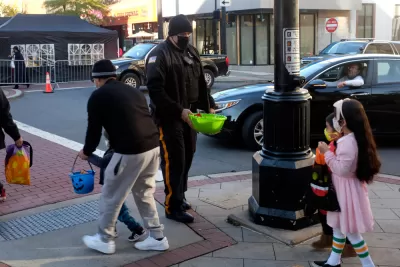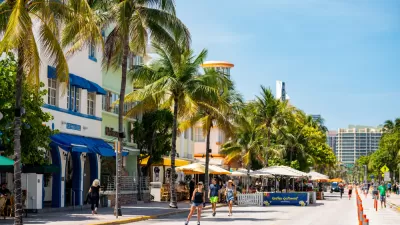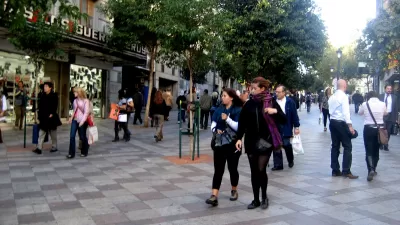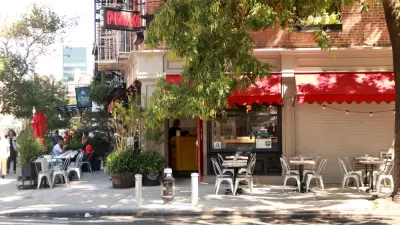Forget razor blades in apples. Henry Grabar argues the biggest threat on Halloween is much more mundane.

In an op-ed for Slate, Henry Grabar uses the annual parent panic over Halloween dangers to highlight another very real and present danger to children: cars. A CDC study showed that children are four times more likely to be killed on Halloween than on any other day.
According to an analysis in the Washington Post, 54 kids were killed by cars on Halloween between 2004 and 2018, making it by far the deadliest day of the year; no other day of the year saw more than 30 deaths across those 15 years, and most saw far less.
Grabar notes that the chance of getting struck by a car is still small, and “no more reason to keep a kid at home on All Hallows’ Eve than fear of fentanyl-flavored Skittles.” But the sharp increase in risk still warrants action, this year in particular. Grabar explains this is in part because “this Halloween falls during a historic surge in bad driving.” On top of that, pandemic-era open streets programs and other experiments with opening up more space to pedestrians have primed cities for changes.
Grabar argues for making Halloween a ‘slow driving’ day, “with trick-or-treat destinations closed to traffic, and everyone else on high alert.” Pointing out that children are known to “have a sixth sense for good design, such as generous lighting, a walkable urban fabric, calm streets, and sidewalk-facing architecture, that adults sometimes struggle to enumerate,” Grabar believes the “trick-or-treat test” should be applied to more of our streets, year-round.
FULL STORY: Ban Cars on Halloween

Planetizen Federal Action Tracker
A weekly monitor of how Trump’s orders and actions are impacting planners and planning in America.

San Francisco's School District Spent $105M To Build Affordable Housing for Teachers — And That's Just the Beginning
SFUSD joins a growing list of school districts using their land holdings to address housing affordability challenges faced by their own employees.

The Tiny, Adorable $7,000 Car Turning Japan Onto EVs
The single seat Mibot charges from a regular plug as quickly as an iPad, and is about half the price of an average EV.

Seattle's Plan for Adopting Driverless Cars
Equity, safety, accessibility and affordability are front of mind as the city prepares for robotaxis and other autonomous vehicles.

As Trump Phases Out FEMA, Is It Time to Flee the Floodplains?
With less federal funding available for disaster relief efforts, the need to relocate at-risk communities is more urgent than ever.

With Protected Lanes, 460% More People Commute by Bike
For those needing more ammo, more data proving what we already knew is here.
Urban Design for Planners 1: Software Tools
This six-course series explores essential urban design concepts using open source software and equips planners with the tools they need to participate fully in the urban design process.
Planning for Universal Design
Learn the tools for implementing Universal Design in planning regulations.
Smith Gee Studio
City of Charlotte
City of Camden Redevelopment Agency
City of Astoria
Transportation Research & Education Center (TREC) at Portland State University
US High Speed Rail Association
City of Camden Redevelopment Agency
Municipality of Princeton (NJ)





























